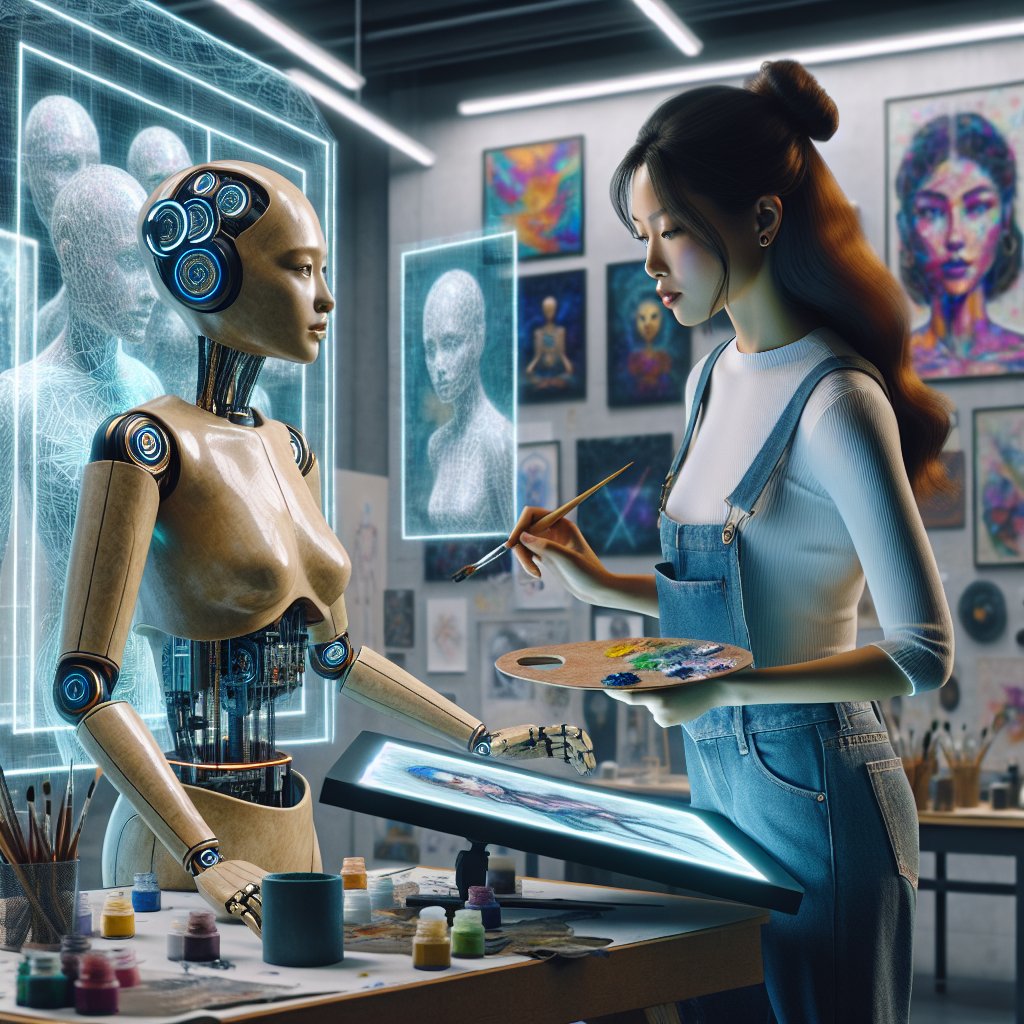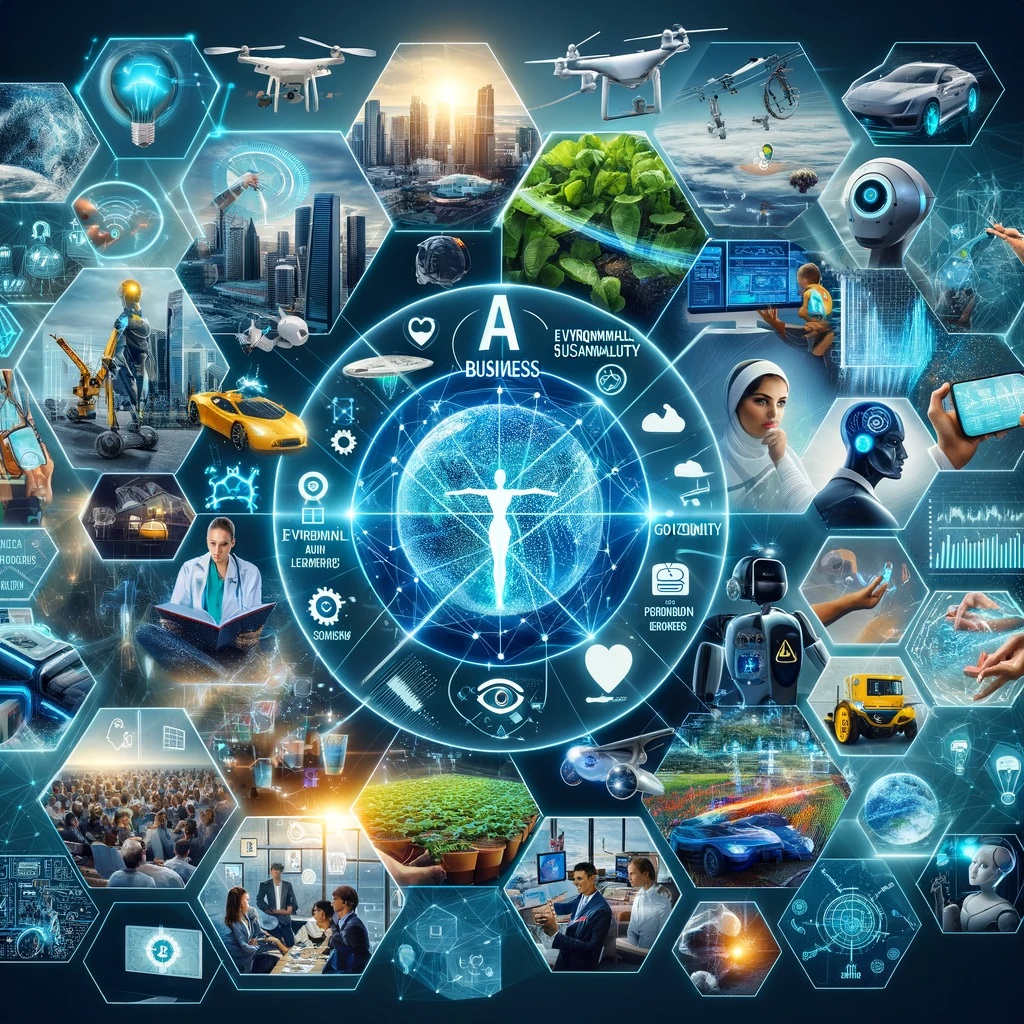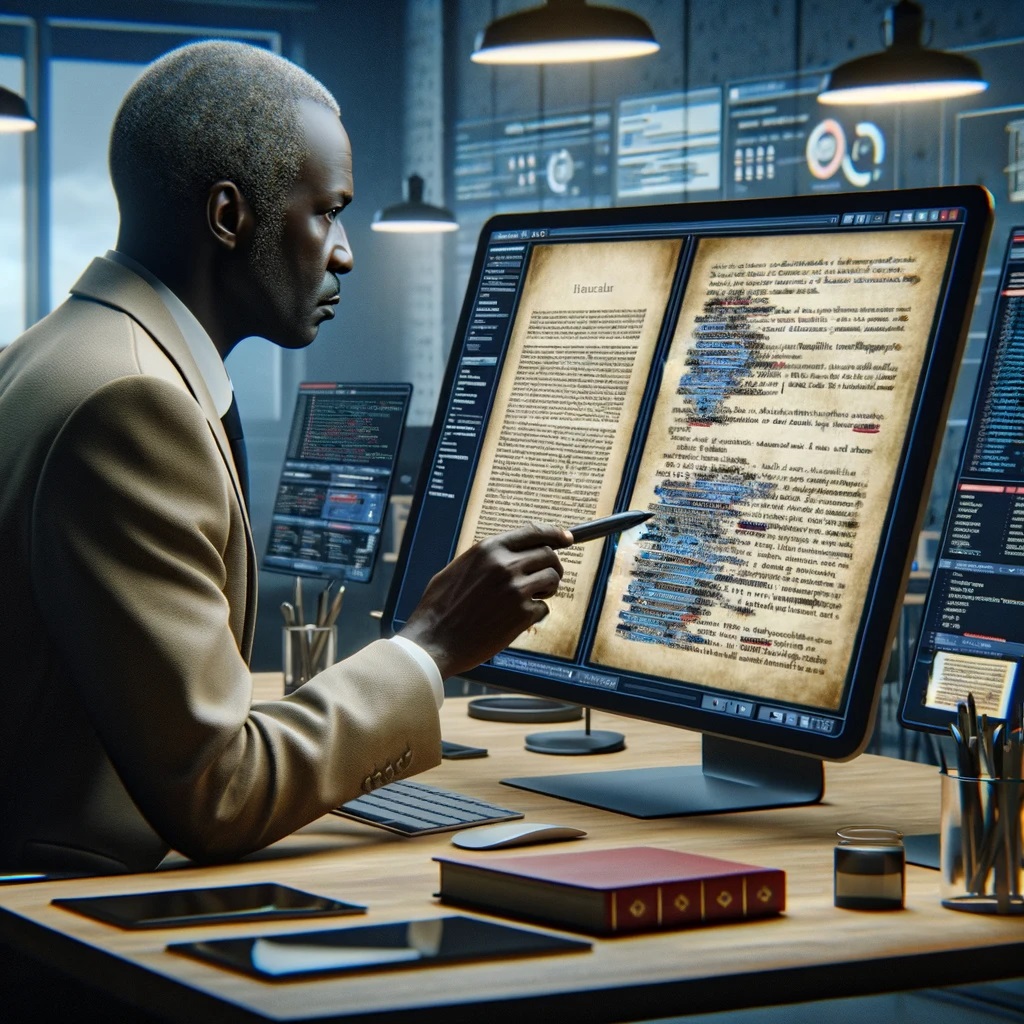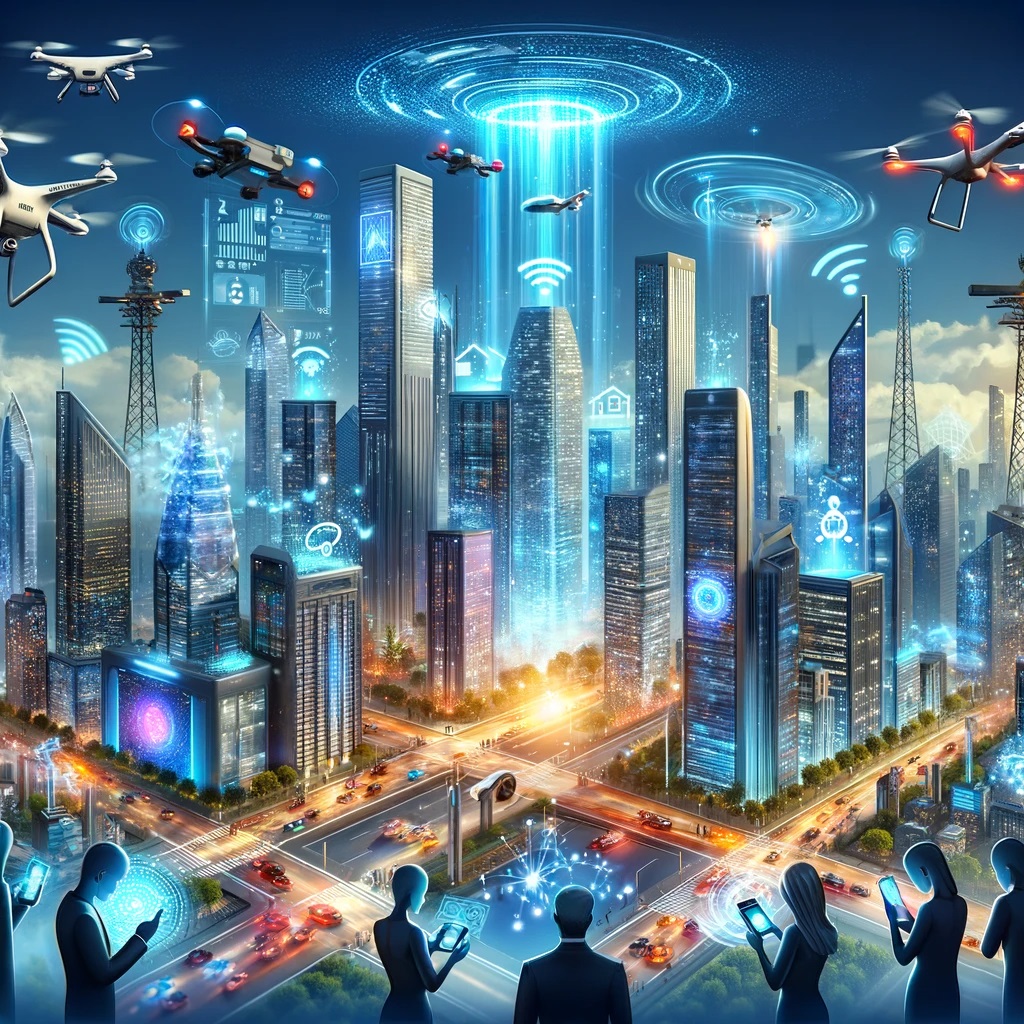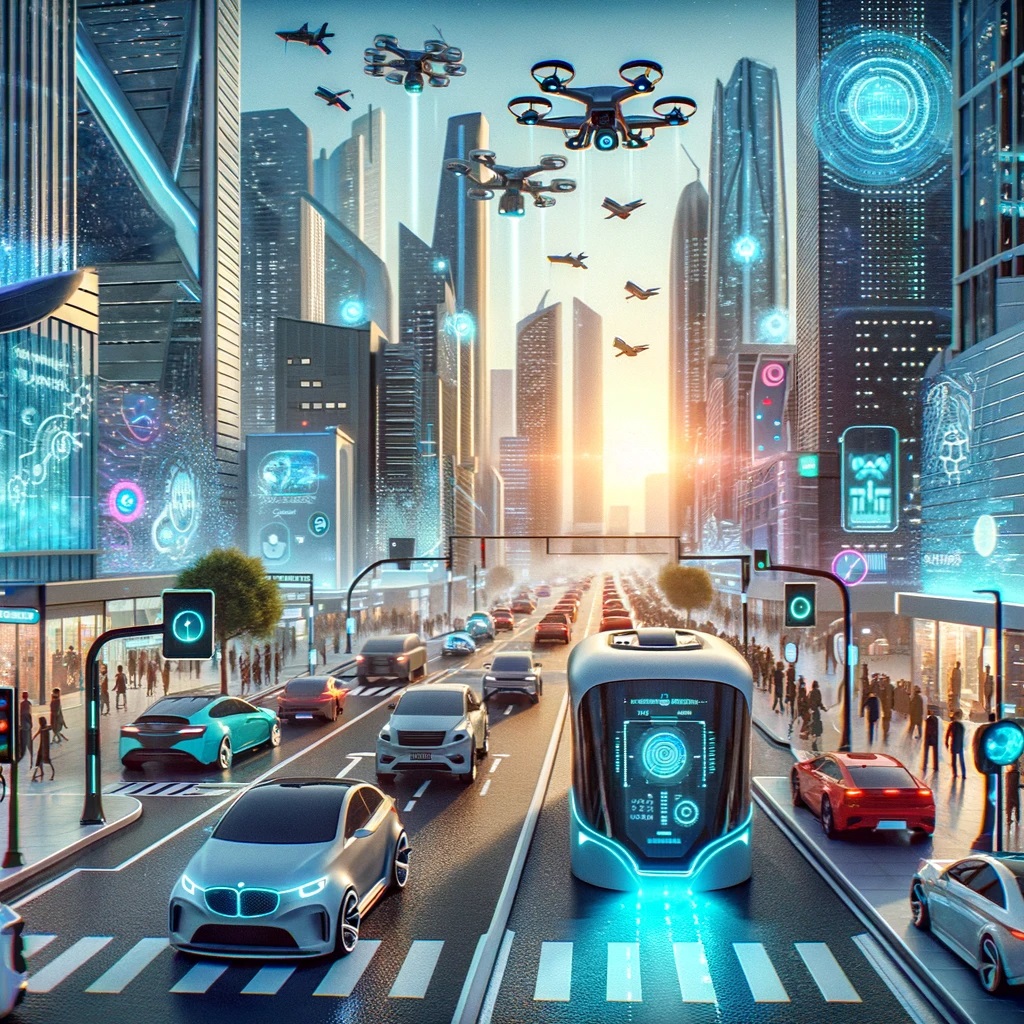The intersection of art and technology has always spurred innovation, but as artificial intelligence becomes more sophisticated, it is transforming the artistic landscape in ways no one could have imagined. The future of artists with AI is a canvas yet to be fully painted, as they experiment with AI as a collaborator while pondering its potential to disrupt the very essence of human creativity.
Use of AI for Artists
The integration of Artificial Intelligence (AI) into the creative realm has revolutionized the way artists conceive and execute their work. With AI’s powerful capabilities, artists are embracing a new era of digital artistry that merges human creativity with machine intelligence. Through advanced algorithms and machine learning, AI software can now assist in generating intricate designs, suggesting improvements, and even creating pieces that resonate with human emotions. This synergy not only accelerates the creative process but also opens up unprecedented avenues for artistic expression, enabling creators to venture beyond traditional boundaries and explore novel concepts and styles.
As AI becomes increasingly sophisticated, its role in art is expanding, offering artists a dynamic set of tools that enhance their natural talents and provide new opportunities for innovation. From virtual assistants that can sort through vast image libraries for inspiration to generative AI models that produce unique artworks, the technology is creating a collaborative space where human intuition meets computational power. Artists utilizing AI are not only able to streamline tedious aspects of the creative process but can also engage in a deeper dialogue with their work, pushing the frontiers of imagination to new, uncharted territories.
The Potential for AI to Replace Artists
The advent of artificial intelligence (AI) in the creative industry is a revolutionary turning point, particularly when considering its implications for artists and the creation of art. As AI technology continues to advance, it brings forth a plethora of tools that can mimic, and sometimes even enhance, the creative processes traditionally attributed to human artists. From generating intricate visual designs to composing music and writing literature, AI’s capabilities are pushing the boundaries of what is possible in the realm of art. This evolving landscape presents a fascinating question: to what extent can AI replicate the nuanced intuition, emotion, and originality that human artists offer?
The discourse around the impact of AI on art is often colored with both excitement and apprehension. AI’s algorithms can now learn from an extensive database of historical art styles and genres, producing work that resonates with the complexity and beauty of human-made pieces. These technological advancements not only serve as a tool for existing artists to explore new frontiers in their craft but also pose a curious scenario wherein AI may potentially step into roles that were once exclusively held by human practitioners. The potential for AI to stand in as pseudo-artists raises important considerations about the uniqueness of human creativity and the future relationship between AI and artists in the art world.
How is AI Influencing Creative Processes in Art?
Artificial intelligence is revolutionizing creative processes across various domains, and the realm of art is no exception. AI systems are now capable of analysing vast amounts of data, recognizing patterns and styles, and even generating their own artistic creations that often blur the lines between human-made and machine-generated art. This technological innovation is enabling artists to push the boundaries of traditional art, experimenting with new forms of expression and creating complex works that were previously impossible. By collaborating with AI, artists can explore a diverse palette of textures, shapes, and concepts, thereby enhancing their creativity and opening up a new horizon of artistic possibilities.
The integration of AI in art also presents new opportunities for personalization and interactive experiences. Algorithms can now interpret viewers’ responses to artworks, allowing for art that evolves and adapts in real-time. Moreover, AI is assisting in the preservation and analysis of historical artworks, providing deeper insights into the styles and techniques of past masters. The influence of AI on art extends beyond creation and interaction; it’s reshaping how art is curated, delivered, and experienced, leading to a digital transformation in the world of art that is as profound as it is inspiring.
Can AI Enhance the Collaboration between Artists and Technology?
The fusion of art and technology has been a catalyst for innovation, pushing the boundaries of what’s creatively possible. In recent years, Artificial Intelligence (AI) has emerged as a game-changing force in this melding, offering artists a new medium to explore and expand their creative horizons. AI algorithms are now capable of analyzing styles, generating new visuals, and even providing creative suggestions, resulting in a symbiotic relationship between human creativity and machine efficiency. By incorporating AI into their workflows, artists are discovering that they can enhance their creative process, unlocking new possibilities in composition, design, and storytelling essentially redefining the art of the possible.
The question of whether AI can truly complement the human element in art elicits a compelling conversation about the future of artistic expression. AI doesn’t just serve as a tool for creation; it acts as a collaborator that can introduce entirely new perspectives and inspirations. This collaboration presents a unique opportunity to amplify artistic efforts and pave the way for unprecedented forms of art that might not have been conceivable before. From digital art installations to AI-assisted musical compositions, the partnership between artists and AI is not only enhancing the artistic landscape but also inviting audiences to engage with art in transformative ways. As artists and technologists continue to explore this terrain, the narrative of art’s evolution is being written with the help of these intelligent systems that offer boundless potential for innovation.
What Does AI-Generated Art Mean for the Future of Human Creativity?
The emergence of Artificial Intelligence (AI) as an artist has sparked an intriguing dialogue about the future of human creativity in the digital era. AI-generated art, made possible by innovative algorithms and machine learning, is transforming the traditional artistic landscape, enabling the creation of complex and sophisticated artworks without direct human intervention. As AI systems digest vast amounts of data, learn styles, and emulate creative processes, they are becoming increasingly proficient at generating unique visual pieces that challenge our perceptions of art and the role of the artist. This evolving art form is raising profound questions about originality, authorship, and the essence of the creative spark, as AI paves new avenues for artistic expression.

